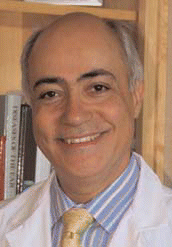An FDA-cleared, noninvasive treatment approach that utilizes neural stimulation to desensitize patients to the disturbing impact of tinnitus has achieved consistently positive results in a controlled clinical study in Australia. In setting up this study we sought to set a much higher hurdle for a clinical success than others have done in the past, said Peter J. Hanley, PhD, CEO of the Australian entity Neuromonics.
Explore This Issue
September 2007Two prior clinical trials for this approach have been conducted in the last decade. What was pleasing in the third trial was to see an even quicker benefit and even more significant outcomes, said Dr. Hanley. We set our benchmark for success at an improvement of at least 40 percent in tinnitus disturbance, and over 90 percent of the patients met or exceeded that hurdle after 6 months.1
The device and treatment, called the Neuromonics Tinnitus Treatment, combines the novel use of acoustic stimulation with a structured program of counseling. The distinctive acoustic component provides stimulation to auditory pathways deprived by hearing loss, engages positively with the limbic system, and allows intermittent, momentary tinnitus perception within a pleasant and relaxing listening experience, thereby facilitating desensitization to the tinnitus signal. By gradually breaking down the patient’s ability to detect the tinnitus, the amount of sound needed to cover up the tinnitus lessens over time. Patients become progressively less aware of and less disturbed by their tinnitus.
In the clinical trial, 35 subjects with predominantly moderate-to-severe tinnitus-related distress were randomly assigned to one of two treatment groups, corresponding to two stage-based variations of the treatment. In the first group, subjects were exposed to intermittent tinnitus perception throughout the six-month treatment program; in the second group, subjects’ tinnitus perception was completely covered up for the first two months and then only intermittently covered for the remaining four months of treatment.
After initial assessment and instructions, participants were given a personal sound player with earphones and an acoustic stimulus that was customized for their individual audiometric profile. Patients were instructed to use the instrument for at least two hours per day. At two, four, six, and 12 months after beginning treatment, both groups displayed clinically and statistically significant improvements in tinnitus disturbance, awareness, and minimum masking levels, as well as loudness discomfort levels. The Tinnitus Reaction Questionnaire (TRQ), comprised of 26 questions regarding the impact of tinnitus on the subject’s quality of life, was the primary measurement tool used in the trial (Figure 1).

Leave a Reply